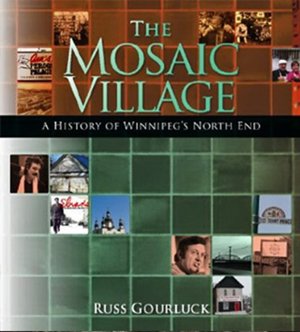The Mosaic Village: An Illustrated History of Winnipeg’s North End

Support Canada's History in other ways (more)
by Russ Gourluck
Great Plains Publications, Winnipeg, 2010
254 pp., illus., $30 paperback
A double review with Immigrants in Prairie Cities: Ethnic Diversity in Twentieth-Century Canada
by Royden Loewen and Gerald Friesen
University of Toronto Press, Toronto, 2009
265 pp., illus., $27.95 paperback
When waves of immigrants came to Canadian prairie cities in the early twentieth century, they did not form one giant melting pot and they did not succumb to Anglo-Canadian conformities. Nor was there to be found any active multiculturalism, say Royden Loewen and Gerald Friesen in Immigrants in Prairie Cities: Ethnic Diversity in Twentieth-Century Canada.
Largely “shut out from power, privilege, and wealth in the prairie city,” immigrants formed their own social networks through family and community, with religion providing a rich cultural backdrop. Ethnic clubs and societies helped them to join together and to meet their shared needs in their new urban existence.
The authors concentrate primarily on three cities: Winnipeg, Calgary, and Edmonton. What could have been a tedious textbook of facts and figures is enriched considerably by interesting quotes, such as Gabrielle Roy’s observation on people staring when French was spoken on Winnipeg streets: “I got so used to it … I thought of it as natural for us to feel more or less like foreigners… until I came to thinking that if everyone was a foreigner, then none of us was.”
While this book will appeal to readers, it would have benefited considerably from the inclusion of some engaging images.
The Mosaic Village: An Illustrated History of Winnipeg’s North End is a book about a city area where “predominantly British citizens were joined by waves of immigrants with very different cultural and religious backgrounds.” Russ Gourluck tells of the neighbourhood’s commerce, churches, and organizations that together helped to transform the city’s fabric. He also speaks of the segregation, bigotry, and poverty that newcomers sometimes endured.
The Mosaic Village is a coffee table-sized paperback filled with stories and pictures of Winnipeg’s North End, including images of the inhabitants and their businesses, foods, and customs. It includes both historic photographs and pictures taken more recently by the author. Although some of the tales are neither funny nor pleasant, the overall tone of the book is brighter and less academic than that of Immigrants in Prairie Cities.
Nevertheless, the two books complement each other in providing immigrants’ stories. Together, they show how important immigrants were in shaping Canada and how newcomers continue to transform and enrich the country’s cultural fabric.
— Beverley Tallon (Read bio)
Beverley Tallon is a freelance writer and the former Assistant Editor for Canada's History.